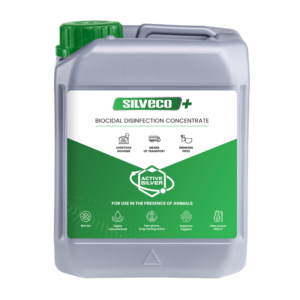Disinfection of livestock housing
Animal breeders wishing to achieve success in the industry must ensure high standards of hygiene on their farms. Inherent in the success of any farm is the disinfection of livestock housing.
Disinfection of livestock housing is a process that aims to reduce or eliminate pathogenic microorganisms in the animal environment, its inherent role is to reduce the risk of future outbreaks of infectious diseases. It is worth remembering that disinfection is a basic element of bio-assurance and one of the most essential elements of animal protection, undeniably positively affecting their welfare.
What is the hygiene of livestock housing?
The health of animals, and consequently the financial effect of breeding, depends to a large extent on the hygienic conditions on the farm. Not surprisingly, disinfection is one of the most essential elements of any farm’s hygiene program, positively influencing animal health and breeding profitability. It is important that any disinfection procedure should be preceded by mechanical removal of all contaminants from the facility (such as feces, bedding) and subsequent thorough washing with specialized softeners and detergents. Once the facility is dry, it is disinfection that is carried out in the next step. Before starting operations, it is crucial to select the right disinfectants for livestock facilities and choose the most appropriate method of disinfection . It should be remembered that properly carried out disinfection covers not only the surfaces of walls and floors, but also all kinds of equipment located in the disinfected room. The most popular methods of applying disinfectants in livestock buildings are spraying and fogging.
What disinfectants to choose for livestock housing?
When choosing, we should be guided by the range of action of a given preparation, paying particular attention to the effectiveness against, most frequently appearing among the herd, pathogenic microorganisms. Absolutely key is the question of safety in the use of a given product, we should choose those preparations that do not show toxic effects against humans and animals and, moreover, that can be used in their presence. Disinfectants should also be compatible with metal parts of livestock housing equipment, not causing them to corrode and, consequently, destroy them. Most disinfectants have an immediate but temporary disinfecting effect. Therefore, when choosing disinfectants, we should look for those that provide prolonged microbiological protection in addition to immediate action. An example of a substance exhibiting such properties is silver. The offer of SILVECO brand includes high-quality disinfection products, which contain in their composition active forms of silver, known for their antibacterial, antiviral and antifungal properties. Systematic use of our products promotes disease prevention by reducing pathogenic microorganisms in the environment and, consequently, limiting their spread. The preparations available in our offer can be successfully applied during the breeding cycle, using for this purpose the traditional method of spraying or fogging livestock premises.
Disinfection methods for livestock facilities
Fogging livestock facilities is one of the most effective and undoubtedly fastest disinfection methods used by livestock producers. It involves spraying a biocidal product in the form of a mist, the droplet size of which is of the order of a few to tens of µm. A mist with such characteristics effectively penetrates the disinfected room, reaching its farthest corners to remove harmful microorganisms. This method of application certainly makes it possible to disinfect a larger area than a traditional spray with a larger droplet size.
Showing the single result
